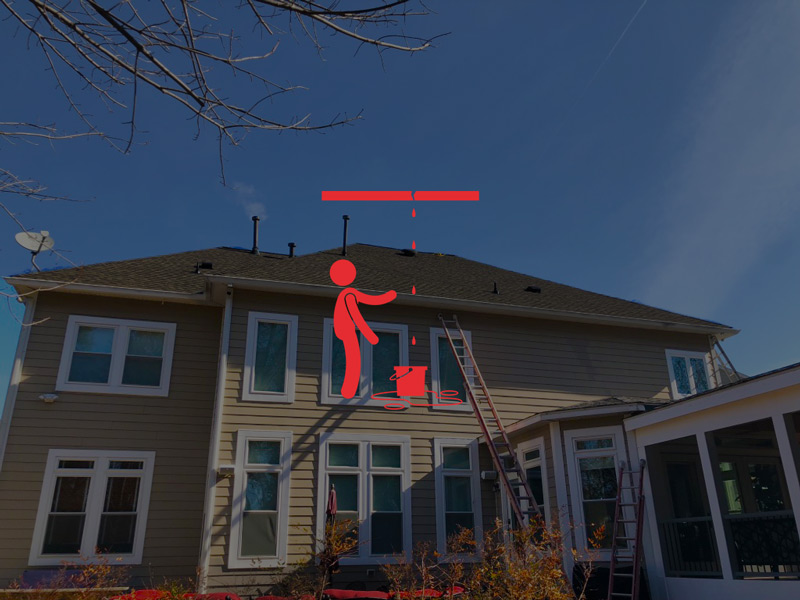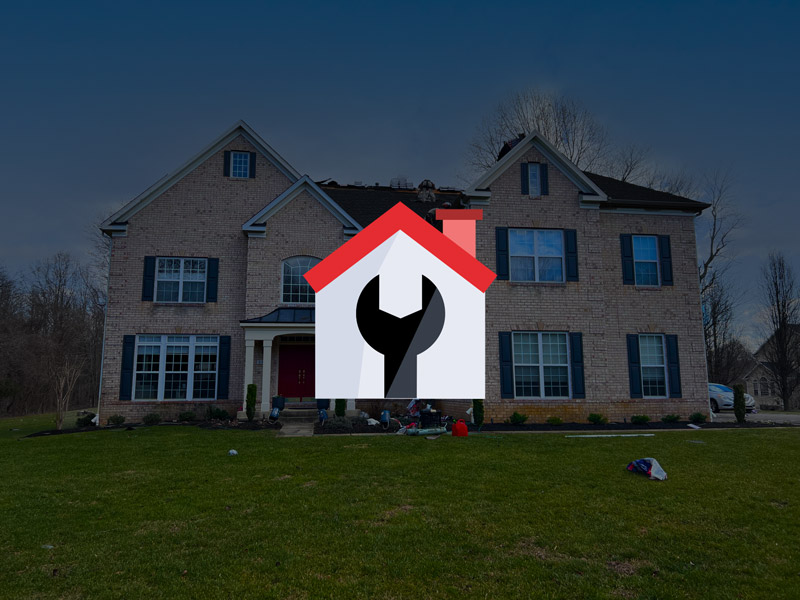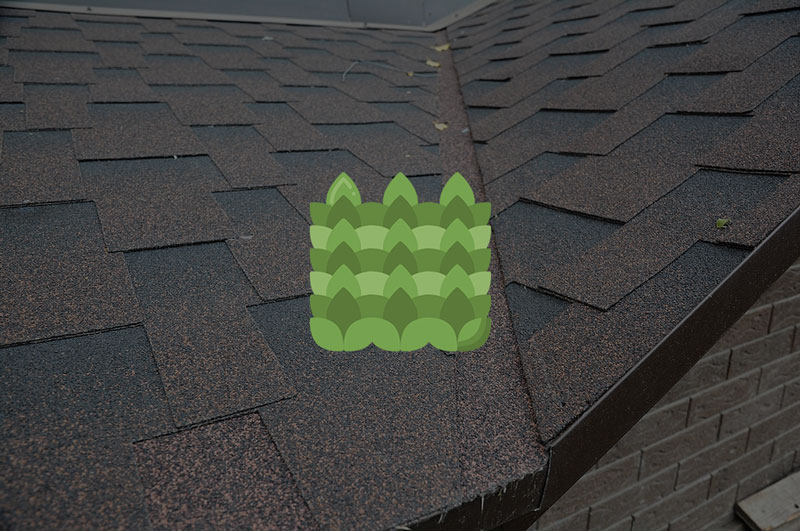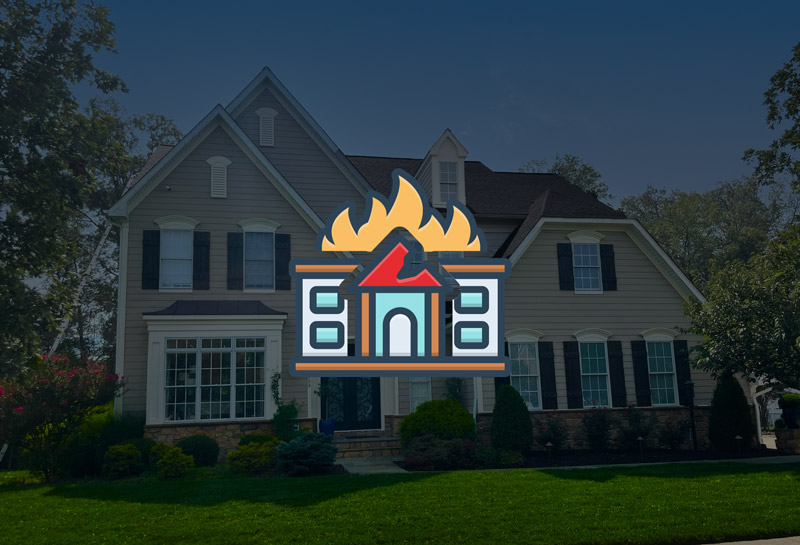Types of Roof Damage | Understanding and Addressing Issues
Roofs can experience various types of damage due to weather conditions, aging, structural issues, and external factors. Some common types of roof damage include wind damage, hail damage, water-related damage such as leaks and ponding water, age-related wear and tear, and structural problems like roof sagging and punctures. Each type of damage requires specific attention and repair techniques to ensure the longevity and functionality of the roof.

Weather-Related Roof Damage
Wind and Storm Damage
Wind and storm damage can wreak havoc on roofs, compromising their integrity and leading to potential leaks and other issues. Understanding the causes and signs of wind damage is essential for homeowners.
Causes and signs of wind damage
Strong winds can arise from severe storms, hurricanes, or even regular weather patterns in certain regions. They can cause various types of roof damage, such as:
- Dislodged or missing shingles: High winds can loosen or tear off shingles, leaving the underlying roof structure exposed.
- Lifted or damaged flashing: The flashing around chimneys, vents, and skylights can be lifted or damaged, allowing water to penetrate the roof.
- Weakened or displaced fascia and soffits: Intense wind gusts can impact the fascia and soffits, leading to structural damage.
Signs of wind damage may include visibly missing or damaged shingles, exposed areas of the roof, leaks, or water stains on interior ceilings or walls.
Impact on roof components
When wind damage occurs, it can affect various roof components:
- Shingles: Damaged or missing shingles compromise the waterproofing and protective capabilities of the roof, making it susceptible to leaks and further damage.
- Flashing: Lifted or damaged flashing allows water to infiltrate the roof, potentially leading to water-related damage and deterioration.
- Gutters: Strong winds can cause debris and branches to impact gutters, leading to blockages and affecting proper drainage.
Precautionary measures and repairs
To mitigate wind damage, homeowners can take precautionary measures such as:
- Ensuring proper installation: Roofing materials should be installed according to manufacturer guidelines and local building codes to withstand high winds.
- Regular inspections: Periodic roof inspections by professionals can identify potential weaknesses and address them promptly.
- Reinforcing vulnerable areas: Adding extra fasteners, using stronger adhesives, or reinforcing vulnerable components can enhance the roof’s resistance to wind damage.
Hail Damage
Hail can be a significant threat to roofs, causing various types of damage. Understanding how to identify hail damage, its common signs, and the necessary steps for assessing and restoring hail-damaged roofs is crucial for homeowners.
Identifying hail damage on roofs
Identifying hail damage requires a thorough inspection of the roof. Look for the following indicators:
- Dented or cracked shingles: Hailstones can leave visible dents or cracks on shingles, compromising their integrity.
- Bruised or punctured underlayment: The underlayment beneath the shingles may exhibit signs of bruising or punctures caused by the impact of hailstones.
- Damaged flashing: Hail can also cause damage to flashing around roof penetrations such as chimneys, vents, and skylights.
Common signs and consequences
The consequences of hail damage can vary depending on the severity and size of the hailstones. Common signs include:
- Granule loss: Hailstones can dislodge granules from the shingles, exposing the underlying material and reducing the roof’s protective capabilities.
- Cracked or broken shingles: Hail impact can lead to shingles cracking or breaking, compromising their ability to shed water effectively.
- Leaks and water infiltration: Hail damage can create vulnerabilities that allow water to penetrate the roof, leading to leaks and potential water damage within the structure.
Assessing and restoring hail-damaged roofs
If you suspect hail damage, it’s crucial to have a professional roofing contractor assess the extent of the damage. They will provide a comprehensive inspection and recommend appropriate restoration measures.
- Insurance claims: In cases of significant hail damage, it may be necessary to file an insurance claim. Document the damage with photographs and consult with your insurance provider to understand the process and requirements.
- Repairs and replacements: Depending on the severity of the hail damage, repairs or replacements may be necessary. This can involve replacing damaged shingles, addressing underlying issues, and restoring the roof’s integrity.

Water-Related Roof Damage
Roof Leaks and Water Intrusion
Roof leaks and water intrusion are common types of water-related roof damage that homeowners may encounter. Understanding the causes, detecting leaks, and knowing the consequences of water damage is essential to address these issues effectively.
Causes and detection of leaks
Roof leaks can be caused by various factors, including:
- Damaged or missing shingles: Cracked or missing shingles create openings for water to penetrate the roof structure.
- Damaged flashing: Improperly installed or deteriorated flashing around chimneys, vents, and skylights can allow water to infiltrate.
- Clogged gutters: When gutters are clogged with debris, water can overflow and seep into the roof, causing damage over time.
Detecting roof leaks requires a systematic approach:
- Visual inspection: Look for water stains on ceilings or walls, peeling paint, or mold and mildew growth, which may indicate water intrusion.
- Attic examination: Inspect the attic for signs of water damage, such as damp insulation, rotting wood, or water drips.
Consequences of water damage
Water damage can have severe consequences if left unaddressed:
- Structural damage: Prolonged exposure to water can weaken the roof structure, leading to sagging, rot, or even collapse.
- Mold and mildew growth: Excess moisture can create an ideal environment for mold and mildew to flourish, posing health risks and further damaging the property.
- Electrical hazards: Water infiltration can compromise electrical systems, increasing the risk of electrical malfunctions or fires.
Repair options for roof leaks
Repairing roof leaks requires proper identification of the source and suitable repair techniques:
- Patching: Small leaks caused by localized damage can often be repaired by applying sealants or patches to the affected areas.
- Shingle replacement: If damaged shingles are the source of the leak, replacing the affected shingles can help prevent further water intrusion.
- Flashing repair or replacement: Damaged flashing should be repaired or replaced to ensure proper water sealing around roof penetrations.

Age-Related Roof Damage
Signs of an Aging Roof
Over time, roofs naturally deteriorate due to age-related factors. Recognizing the signs of an aging roof is crucial for homeowners to take proactive measures and address potential damage promptly.
- Curling or buckling shingles: Shingles that have curled or buckled at the edges are indicative of an aging roof. This can occur due to prolonged exposure to the elements.
- Cracked or missing shingles: As a roof ages, shingles may crack or become dislodged, leaving vulnerable areas that can lead to water intrusion and further damage.
- Granule loss: Aging roofs often experience granule loss, which can be observed as a buildup of granules in gutters or downspouts. This indicates a decrease in the shingles’ protective capabilities.
Effects of UV radiation and weathering
UV radiation and weathering are two primary factors that contribute to the aging process of a roof. Understanding their effects can help homeowners grasp the importance of maintaining and protecting their roofs.
- UV radiation: Prolonged exposure to the sun’s UV rays can cause shingles to become brittle, fade in color, and lose their structural integrity. This can lead to increased vulnerability to other types of roof damage.
- Weathering: Extreme weather conditions such as rain, snow, hail, and fluctuating temperatures take a toll on the roof over time. They can cause the materials to expand, contract, and deteriorate, accelerating the aging process.
Addressing age-related damage through maintenance
Regular maintenance is key to extending the lifespan of an aging roof and minimizing potential damage. Homeowners should consider the following maintenance practices:
- Inspections: Schedule periodic roof inspections by a professional to assess the condition of the roof, identify areas of concern, and address any potential issues promptly.
- Repairs and replacements: Perform necessary repairs or replacements as soon as signs of age-related damage are identified. This includes replacing cracked or missing shingles and addressing areas of granule loss.
- Cleaning and debris removal: Keep the roof clean and free from debris that can retain moisture and promote the growth of mold and algae, which can further deteriorate the roof.

Vegetation-Related Roof Damage
Moss and Algae Growth
The presence of moss and algae on roofs is a common issue that can lead to various types of damage if left unaddressed. Understanding the impact of moss and algae, preventive measures, and the consequences of neglecting vegetation-related damage is crucial for maintaining a healthy roof.
Impact on roof surfaces
Moss and algae growth can have detrimental effects on roof surfaces:
- Moisture retention: Moss and algae trap moisture, which can accelerate the deterioration of roofing materials, especially in humid environments. This can lead to the weakening of the roof structure over time.
- Shingle damage: Moss and algae can penetrate beneath the shingles, causing them to lift, crack, or warp. This compromises the roof’s ability to shed water, leading to potential leaks and water damage.
- Reduced lifespan: The presence of moss and algae can shorten the lifespan of roofing materials, resulting in the need for premature repairs or replacements.
Preventing and removing moss and algae
To prevent moss and algae growth on the roof, consider the following measures:
- Regular roof maintenance: Keep the roof clean by removing debris, leaves, and twigs that can provide a favorable environment for moss and algae to thrive.
- Trimming nearby trees: Ensure that tree branches are adequately trimmed to minimize shade and improve air circulation, reducing moisture buildup.
- Zinc or copper strips: Installing strips of zinc or copper near the roof’s ridge can inhibit moss and algae growth by releasing small amounts of metal ions during rainfall.
- Biocide treatments: Applying specialized biocide treatments can effectively eliminate existing moss and algae and inhibit their future growth.
Consequences of neglecting vegetation-related damage
Neglecting vegetation-related damage can lead to severe repercussions:
- Structural degradation: Moss and algae can compromise the integrity of the roof, leading to leaks, water damage, and even structural issues if left unchecked.
- Increased maintenance costs: Delaying the removal of moss and algae can result in more extensive damage, requiring costly repairs or even a complete roof replacement.
- Aesthetics and curb appeal: Excessive moss and algae growth can make a roof appear unsightly, negatively impacting the overall aesthetics and value of a property.

Structural Roof Damage
Sagging Roofs
Sagging roofs are a serious type of structural damage that can compromise the integrity and safety of a building. Understanding the causes, signs, and necessary actions to rectify this issue is essential for homeowners.
Causes and signs of roof sagging
Roof sagging can occur due to various factors, including:
- Overload: Excessive weight on the roof, such as accumulated snow, heavy equipment, or multiple layers of roofing materials, can cause the roof structure to sag over time.
- Poor construction or design: Inadequate construction techniques, improper use of materials, or insufficient support structures during the initial installation can lead to roof sagging.
- Water damage: Prolonged water infiltration due to leaks or inadequate drainage can weaken the roof’s structural components, leading to sagging.
Signs of roof sagging may include:
- Visibly dipping or bowing sections of the roofline.
- Cracked or distorted ceilings and walls inside the building.
- Uneven or sagging areas on the roof surface.
Structural implications and safety concerns
A sagging roof indicates significant structural problems that should not be ignored. The implications of a sagging roof include:
- Increased risk of roof collapse: The compromised structural integrity of a sagging roof poses a potential hazard to the occupants of the building, making it crucial to address the issue promptly.
- Damage to other building components: Roof sagging can exert stress on the walls, windows, and foundation, potentially causing additional damage throughout the structure.
Rectifying sagging roofs through reinforcements
When dealing with a sagging roof, it is vital to consult a professional roofing contractor or structural engineer who can assess the severity of the damage and recommend appropriate measures. Reinforcements may include:
- Installing additional support beams or trusses to strengthen the roof structure.
- Removing excess weight, such as snow accumulation or unnecessary layers of roofing materials.
- Repairing or replacing damaged structural components, such as rafters or joists.
Please Share!






